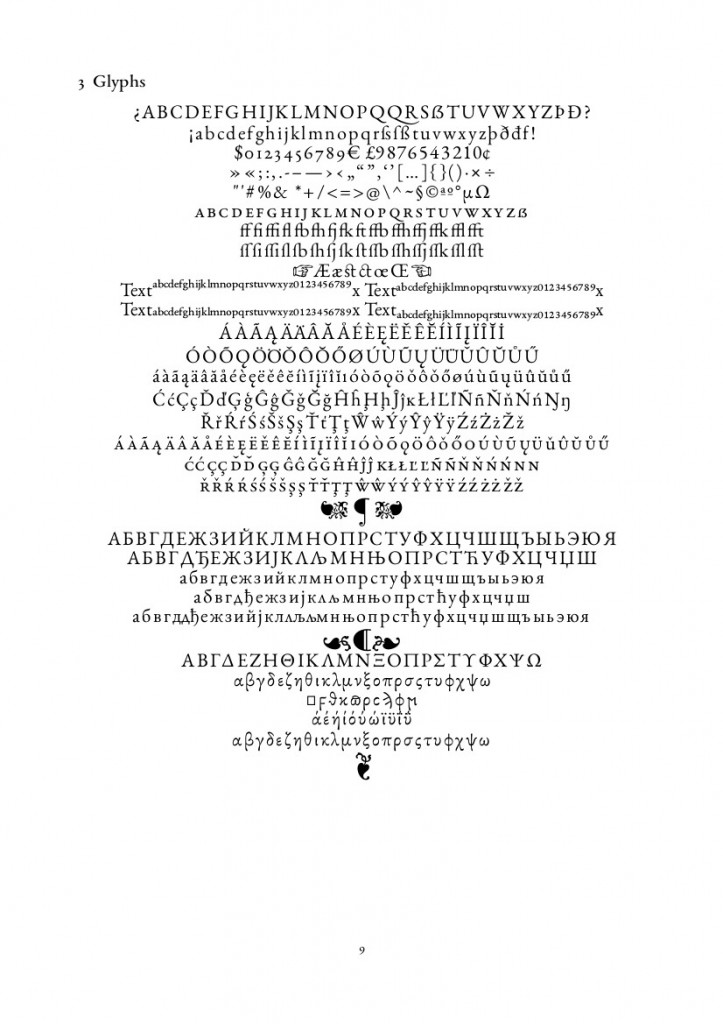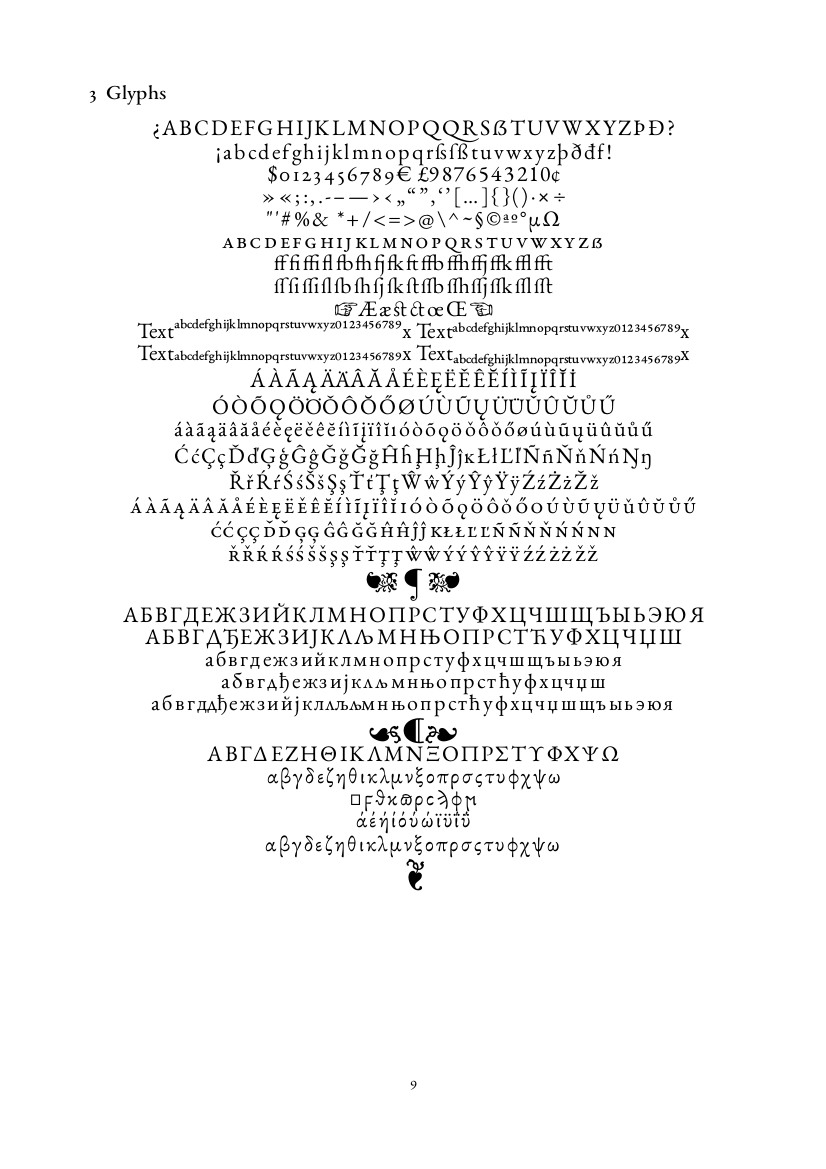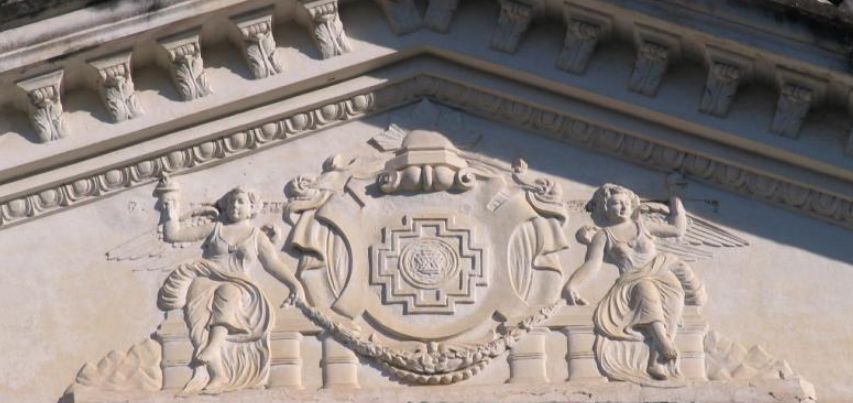Georg Duffner’s EB Garamond, according to its official website, “is an open source project to create a revival of Claude Garamont’s famous humanist typeface from the mid-16th century.”
It has true italics, true bold (more like semi-bold), true subscripts and superscripts, true swash caps and true small caps (including true capital ß – see Ralf Herrmann’s crystal-clear presentation on this). There are old style figures, discretionary ligatures, and work-in-progress initials. And in particular, there is coverage of the Unicode Latin Extended Additional codeblock.
This is not only actually all in a free font, but in one that looks pretty good, as the specimen [PDF] shows:

Although I haven’t given EB Garamond a full tryout yet, I can confirm that it works out of the box in XeTeX, which is probably the tool that can exploit its advantages to the fullest.
A caveat: EB Garamond is work in progress; Cyrillic italics, for example, are clearly provisional at the time of writing, and some outlines were updated as recently as a couple of weeks ago on github. Nonetheless, it will be good enough to set camera-ready copy for many projects as it stands; it is certainly miles ahead of the unspeakable G****** U****** and its ilk. Thankyou, Mr. Duffner.
Files
https://github.com/georgd/EB-Garamond/blob/master/otf/EBGaramond.otf?raw=true
https://github.com/georgd/EB-Granjon/raw/master/OTF/EBGaramondItalic.otf
https://github.com/georgd/EB-Granjon/blob/master/OTF/EBGaramondBold.otf




